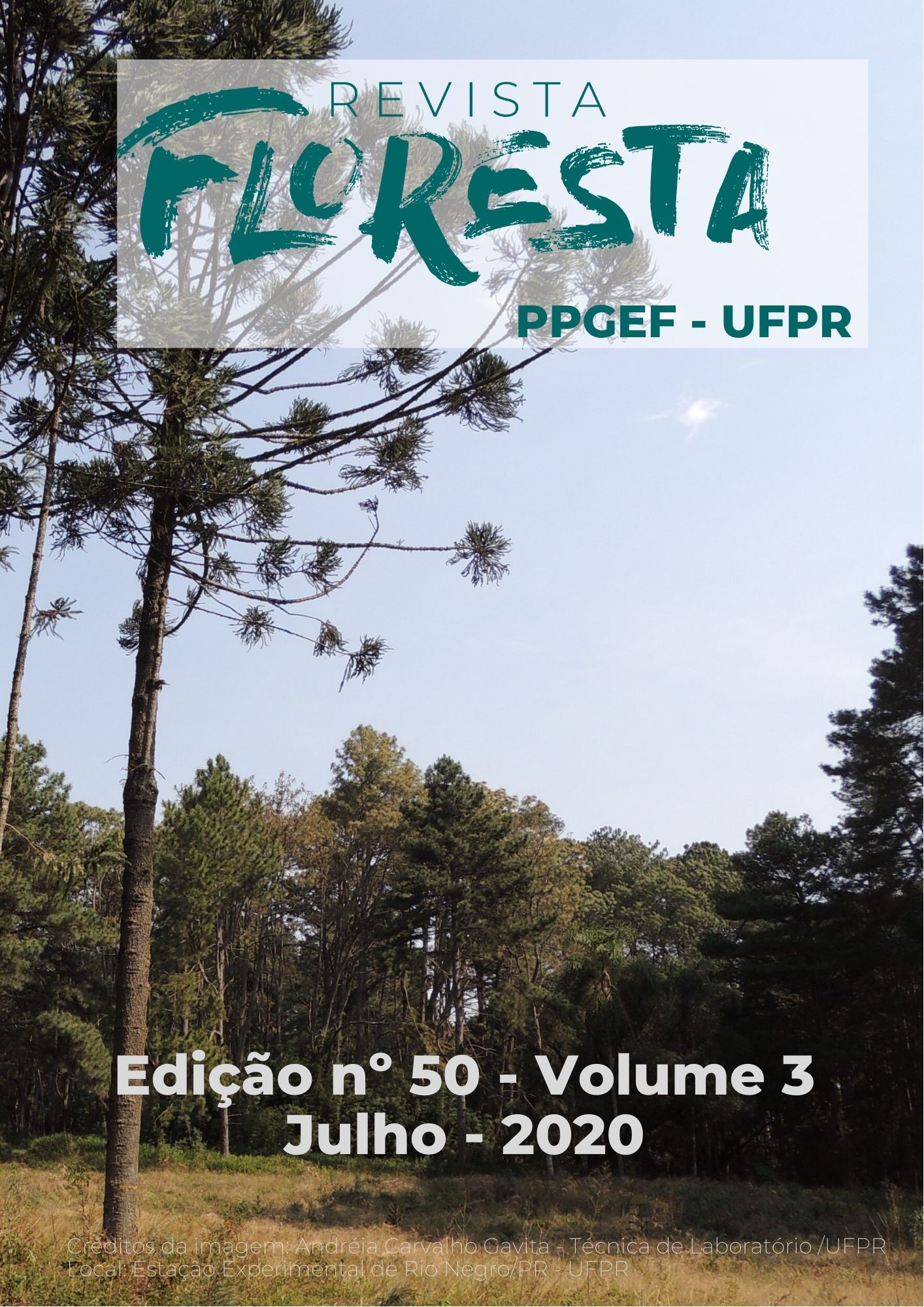Brazilian landscape styles and tree biodiversity in public garden squares
DOI:
https://doi.org/10.5380/rf.v50i3.63862Palavras-chave:
urban forest, green areas, indigenous species, Shannon diversity index, Pielou diversity indexResumo
The main features of the Brazilian contemporary landscape style are the recovery of degraded areas and the use of indigenous species. This study aimed at analyzing the vegetation of the Curitiba-PR public garden squares to verify if the areas created during the contemporary period (from 1990 on) have a greater diversity of tree species than other squares and, therefore, are more significant for biodiversity conservation. For this, 32 of the city's 454 squares were sampled as determined by statistical calculation, then classified by creation year and landscape style. Trees species, families, and individuals were identified and classified as to their origin; and the variables richness; average species; number of individuals; density of individuals; and the Shannon, Pielou, and Odum indexes were analyzed. The 15 contemporary style squares presented 399 individuals of 54 species and 27 families, with 43.61% of the individuals and 50.00% of the species of exotic origin; individuals average of 26.60 ±9.72 per square and 43.09 ±35.13 per hectare; species average of 6.93 ±4.98 per square and 13.95 ±10.63 per hectare; and diversity indexes of Shannon 3.39, Pielou 0.85, and Odum 9.02. The squares in the contemporary style presented higher diversity indexes, but they have, on average, fewer species, families, and individuals, in addition to a greater proportion of exotic species and individuals. These results indicate that these squares did not follow the typical characteristics of the contemporary style and are of no greater significance for biodiversity conservation when compared to other squares.
Downloads
Publicado
Como Citar
Edição
Seção
Licença
Direitos Autorais para artigos publicados nesta revista são do autor, com direitos de primeira publicação para a revista. Em virtude da aparecerem nesta revista de acesso público, os artigos são de uso gratuito, com atribuições próprias, em aplicações educacionais e não-comerciais.A revista, seguindo a recomendações do movimento Acesso Aberto, proporciona acesso publico a todo o seu conteudo, seguindo o principio de que tornar gratuito o acesso a pesquisas gera um maior intrcambio global de conhecimento.
Conteúdos do periódico licenciados sob uma CC BY-NC-SA 4.0



